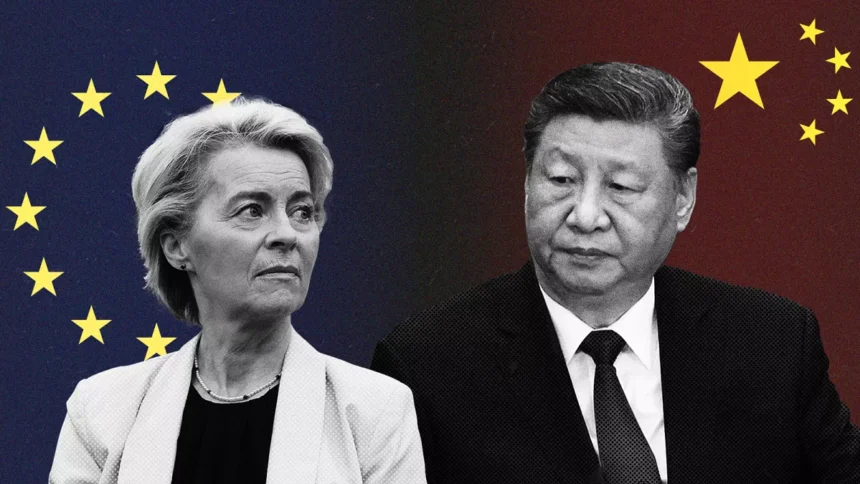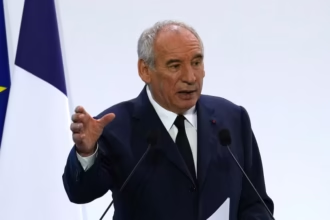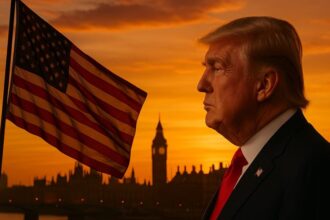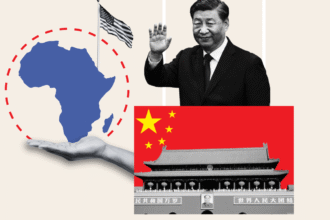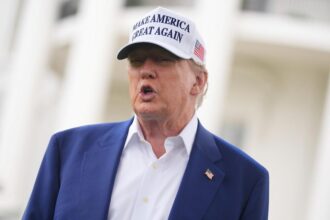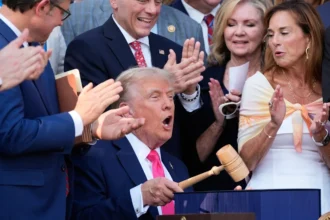The political and economic strategies employed by Donald Trump during his presidency have been the subject of intense scrutiny and debate. One of the most notable aspects of his approach was the way he positioned the United States in the global arena, particularly in relation to China and Europe. Trump’s policies can be seen as a high-stakes game of geopolitical chess, where the U.S. and China emerge as the primary beneficiaries, while Europe often finds itself shouldering the financial burden.
Economic Nationalism and Trade Wars
Trump’s economic nationalism and aggressive trade policies were central to his strategy. By imposing tariffs on Chinese goods, Trump aimed to reduce the trade deficit and protect American industries. This move had a dual effect: it put pressure on China to negotiate more favorable trade terms for the U.S., and it also stimulated domestic production, creating jobs and boosting the American economy. China, in turn, was forced to adapt by diversifying its markets and investing in technological advancements to reduce its dependence on U.S. imports.
Europe’s Dilemma
While the U.S. and China were engaged in this economic tug-of-war, Europe found itself in a precarious position. The European Union (EU) relies heavily on trade with both the U.S. and China, and the imposition of tariffs by the U.S. had ripple effects across the Atlantic. European industries, particularly in sectors like automotive and technology, faced increased costs and market uncertainties. The EU was caught in the middle, trying to maintain its economic stability while navigating the volatile trade policies of its two major trading partners.
Strategic Alliances and Divide-and-Rule
Trump’s approach also involved a strategic realignment of alliances. By strengthening ties with China on certain issues while maintaining a hardline stance on others, Trump created a complex dynamic where both nations had incentives to cooperate with the U.S. This divide-and-rule strategy allowed the U.S. to extract concessions from both China and Europe, further solidifying its position as a global power broker.
Technological and Military Advantage
The trade wars also had implications for technological and military superiority. The U.S. and China both invested heavily in research and development, aiming to gain an edge in emerging technologies such as artificial intelligence, 5G, and quantum computing. These advancements not only enhanced their economic competitiveness but also bolstered their military capabilities, ensuring that both nations remained at the forefront of global power dynamics.
Europe’s Financial Burden
Europe, meanwhile, faced the brunt of the economic fallout. The increased tariffs and trade uncertainties led to higher costs for European consumers and businesses, stifling economic growth and innovation. The EU was forced to implement countermeasures and provide financial support to its member states to mitigate the impact, effectively shouldering a significant portion of the economic burden resulting from the U.S.-China trade disputes.
Long-Term Implications
The long-term implications of Trump’s strategies are still unfolding, but it is clear that his policies have reshaped the global economic landscape. The U.S. and China have emerged stronger, with more robust economies and enhanced technological capabilities. Europe, on the other hand, has been left to grapple with the economic aftershocks, prompting a reevaluation of its trade policies and strategic alliances.
In conclusion, Trump’s geopolitical game has positioned the U.S. and China as the primary winners, while Europe has largely borne the financial cost. This strategic maneuvering has not only reshaped global trade dynamics but also highlighted the complex interdependencies and power struggles in the modern world. As the geopolitical chess match continues, the actions of these global powers will undoubtedly shape the future of international relations and economic stability.

